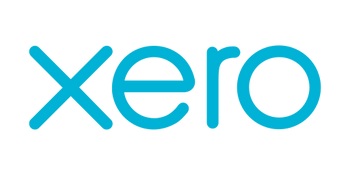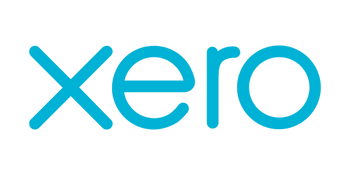{"id":9327837380882,"title":"Katana Cloud Inventory List Purchase Orders Integration","handle":"katana-cloud-inventory-list-purchase-orders-integration","description":"\u003ch2\u003eUtilization of the List Purchase Orders API Endpoint\u003c\/h2\u003e\n\n\u003cp\u003eThe List Purchase Orders API endpoint is a powerful tool designed for business owners, inventory managers, and any user involved in the procurement process of an organization. This interface allows users to programmatically retrieve a list of purchase orders from their database or enterprise resource planning (ERP) system.\u003c\/p\u003e\n\n\u003cp\u003e\u003cstrong\u003eCapabilities of the API Endpoint:\u003c\/strong\u003e\u003c\/p\u003e\n\u003cul\u003e\n \u003cli\u003e\n\u003cstrong\u003eRetrieval of Purchase Order Data:\u003c\/strong\u003e Users can fetch purchase order (PO) records, which typically include PO numbers, order dates, supplier information, item details, quantities, prices, and the status of each order.\u003c\/li\u003e\n \u003cli\u003e\n\u003cstrong\u003eFiltering and Sorting:\u003c\/strong\u003e The API often allows users to apply filters and sorting parameters to organize and prioritize the data according to their specific needs. This may include filtering by date, supplier, or status (e.g., pending, approved, completed).\u003c\/li\u003e\n \u003cli\u003e\n\u003cstrong\u003eIntegration with Other Systems:\u003c\/strong\u003e Since modern businesses rely on an ecosystem of interconnected tools, this API endpoint can integrate with other systems like inventory management, accounting software, or supply chain modules to streamline processes.\u003c\/li\u003e\n\u003c\/ul\u003e\n\n\u003cp\u003e\u003cstrong\u003eProblems Solved by the API Endpoint:\u003c\/strong\u003e\u003c\/p\u003e\n\n\u003ch3\u003e1. Improvement of Operational Efficiency\u003c\/h3\u003e\n\u003cp\u003eThe API allows for the automation of retrieving purchase order data, which reduces the time and effort typically spent on manual data entry or report generation. By enabling quick access to purchase order information, businesses can more efficiently manage their procurement processes.\u003c\/p\u003e\n\n\u003ch3\u003e2. Enhanced Visibility and Reporting\u003c\/h3\u003e\n\u003cp\u003eHaving access to up-to-date purchase order information through the API can enhance the visibility of the procurement pipeline. It enables stakeholders to generate reports and analytics to monitor key performance indicators (KPIs) and make informed decisions based on current data.\u003c\/p\u003e\n\n\u003ch3\u003e3. Better Inventory Management\u003c\/h3\u003e\n\u003cp\u003eBy integrating the API with inventory management systems, businesses can automatically update stock levels based on the purchase orders. This linkage helps ensure that inventory is replenished in a timely manner, preventing stockouts or overstocking which can be costly.\u003c\/p\u003e\n\n\u003ch3\u003e4. Streamlined Supplier Management\u003c\/h3\u003e\n\u003cp\u003eList Purchase Orders API allows for tracking and analysis of supplier performance through order fulfillment timelines and quality of goods received. This data can help manage supplier relationships and negotiate better terms or make strategic changes to the supplier base.\u003c\/p\u003e\n\n\u003ch3\u003e5. Financial Control and Planning\u003c\/h3\u003e\n\u003cp\u003eThe integration of the API with accounting systems can aid in real-time financial planning and budgeting. It provides finance departments with immediate insight into outstanding liabilities from purchase orders that have not yet been invoiced or paid.\u003c\/p\u003e\n\n\u003ch3\u003e6. Regulatory Compliance and Audit\u003c\/h3\u003e\n\u003cp\u003eSince purchase orders are legally binding documents, the API ensures easy access to historical data for audit trails and compliance purposes. It can help quickly address any queries related to past purchases, facilitating compliance with industry standards or regulations.\u003c\/p\u003e\n\n\u003cp\u003eIn conclusion, the List Purchase Orders API endpoint can play a crucial role in optimizing procurement processes, enhancing data-driven decision-making, and fostering seamless integration between various business systems. It provides a scalable and efficient solution for managing a foundational aspect of any product-based business—the procurement of goods and keeping track of purchase commitments.\u003c\/p\u003e","published_at":"2024-04-19T11:18:20-05:00","created_at":"2024-04-19T11:18:21-05:00","vendor":"Katana Cloud Inventory","type":"Integration","tags":[],"price":0,"price_min":0,"price_max":0,"available":true,"price_varies":false,"compare_at_price":null,"compare_at_price_min":0,"compare_at_price_max":0,"compare_at_price_varies":false,"variants":[{"id":48830909186322,"title":"Default Title","option1":"Default Title","option2":null,"option3":null,"sku":"","requires_shipping":true,"taxable":true,"featured_image":null,"available":true,"name":"Katana Cloud Inventory List Purchase Orders Integration","public_title":null,"options":["Default Title"],"price":0,"weight":0,"compare_at_price":null,"inventory_management":null,"barcode":null,"requires_selling_plan":false,"selling_plan_allocations":[]}],"images":["\/\/consultantsinabox.com\/cdn\/shop\/files\/7741333499455a7ec7b4a28056f939b4_4b25f7fd-4cc9-4245-8b55-947f4bb6999b.png?v=1713543501"],"featured_image":"\/\/consultantsinabox.com\/cdn\/shop\/files\/7741333499455a7ec7b4a28056f939b4_4b25f7fd-4cc9-4245-8b55-947f4bb6999b.png?v=1713543501","options":["Title"],"media":[{"alt":"Katana Cloud Inventory Logo","id":38644029194514,"position":1,"preview_image":{"aspect_ratio":1.0,"height":1200,"width":1200,"src":"\/\/consultantsinabox.com\/cdn\/shop\/files\/7741333499455a7ec7b4a28056f939b4_4b25f7fd-4cc9-4245-8b55-947f4bb6999b.png?v=1713543501"},"aspect_ratio":1.0,"height":1200,"media_type":"image","src":"\/\/consultantsinabox.com\/cdn\/shop\/files\/7741333499455a7ec7b4a28056f939b4_4b25f7fd-4cc9-4245-8b55-947f4bb6999b.png?v=1713543501","width":1200}],"requires_selling_plan":false,"selling_plan_groups":[],"content":"\u003ch2\u003eUtilization of the List Purchase Orders API Endpoint\u003c\/h2\u003e\n\n\u003cp\u003eThe List Purchase Orders API endpoint is a powerful tool designed for business owners, inventory managers, and any user involved in the procurement process of an organization. This interface allows users to programmatically retrieve a list of purchase orders from their database or enterprise resource planning (ERP) system.\u003c\/p\u003e\n\n\u003cp\u003e\u003cstrong\u003eCapabilities of the API Endpoint:\u003c\/strong\u003e\u003c\/p\u003e\n\u003cul\u003e\n \u003cli\u003e\n\u003cstrong\u003eRetrieval of Purchase Order Data:\u003c\/strong\u003e Users can fetch purchase order (PO) records, which typically include PO numbers, order dates, supplier information, item details, quantities, prices, and the status of each order.\u003c\/li\u003e\n \u003cli\u003e\n\u003cstrong\u003eFiltering and Sorting:\u003c\/strong\u003e The API often allows users to apply filters and sorting parameters to organize and prioritize the data according to their specific needs. This may include filtering by date, supplier, or status (e.g., pending, approved, completed).\u003c\/li\u003e\n \u003cli\u003e\n\u003cstrong\u003eIntegration with Other Systems:\u003c\/strong\u003e Since modern businesses rely on an ecosystem of interconnected tools, this API endpoint can integrate with other systems like inventory management, accounting software, or supply chain modules to streamline processes.\u003c\/li\u003e\n\u003c\/ul\u003e\n\n\u003cp\u003e\u003cstrong\u003eProblems Solved by the API Endpoint:\u003c\/strong\u003e\u003c\/p\u003e\n\n\u003ch3\u003e1. Improvement of Operational Efficiency\u003c\/h3\u003e\n\u003cp\u003eThe API allows for the automation of retrieving purchase order data, which reduces the time and effort typically spent on manual data entry or report generation. By enabling quick access to purchase order information, businesses can more efficiently manage their procurement processes.\u003c\/p\u003e\n\n\u003ch3\u003e2. Enhanced Visibility and Reporting\u003c\/h3\u003e\n\u003cp\u003eHaving access to up-to-date purchase order information through the API can enhance the visibility of the procurement pipeline. It enables stakeholders to generate reports and analytics to monitor key performance indicators (KPIs) and make informed decisions based on current data.\u003c\/p\u003e\n\n\u003ch3\u003e3. Better Inventory Management\u003c\/h3\u003e\n\u003cp\u003eBy integrating the API with inventory management systems, businesses can automatically update stock levels based on the purchase orders. This linkage helps ensure that inventory is replenished in a timely manner, preventing stockouts or overstocking which can be costly.\u003c\/p\u003e\n\n\u003ch3\u003e4. Streamlined Supplier Management\u003c\/h3\u003e\n\u003cp\u003eList Purchase Orders API allows for tracking and analysis of supplier performance through order fulfillment timelines and quality of goods received. This data can help manage supplier relationships and negotiate better terms or make strategic changes to the supplier base.\u003c\/p\u003e\n\n\u003ch3\u003e5. Financial Control and Planning\u003c\/h3\u003e\n\u003cp\u003eThe integration of the API with accounting systems can aid in real-time financial planning and budgeting. It provides finance departments with immediate insight into outstanding liabilities from purchase orders that have not yet been invoiced or paid.\u003c\/p\u003e\n\n\u003ch3\u003e6. Regulatory Compliance and Audit\u003c\/h3\u003e\n\u003cp\u003eSince purchase orders are legally binding documents, the API ensures easy access to historical data for audit trails and compliance purposes. It can help quickly address any queries related to past purchases, facilitating compliance with industry standards or regulations.\u003c\/p\u003e\n\n\u003cp\u003eIn conclusion, the List Purchase Orders API endpoint can play a crucial role in optimizing procurement processes, enhancing data-driven decision-making, and fostering seamless integration between various business systems. It provides a scalable and efficient solution for managing a foundational aspect of any product-based business—the procurement of goods and keeping track of purchase commitments.\u003c\/p\u003e"}












